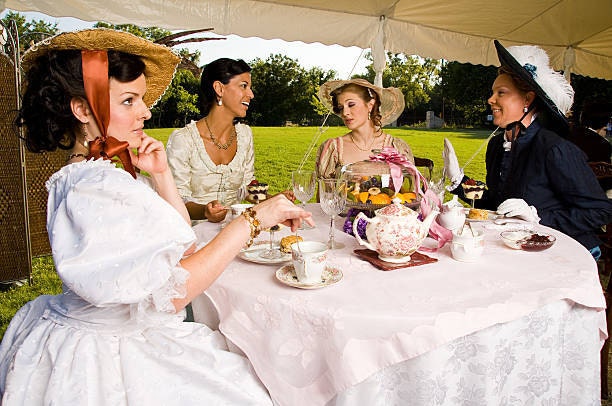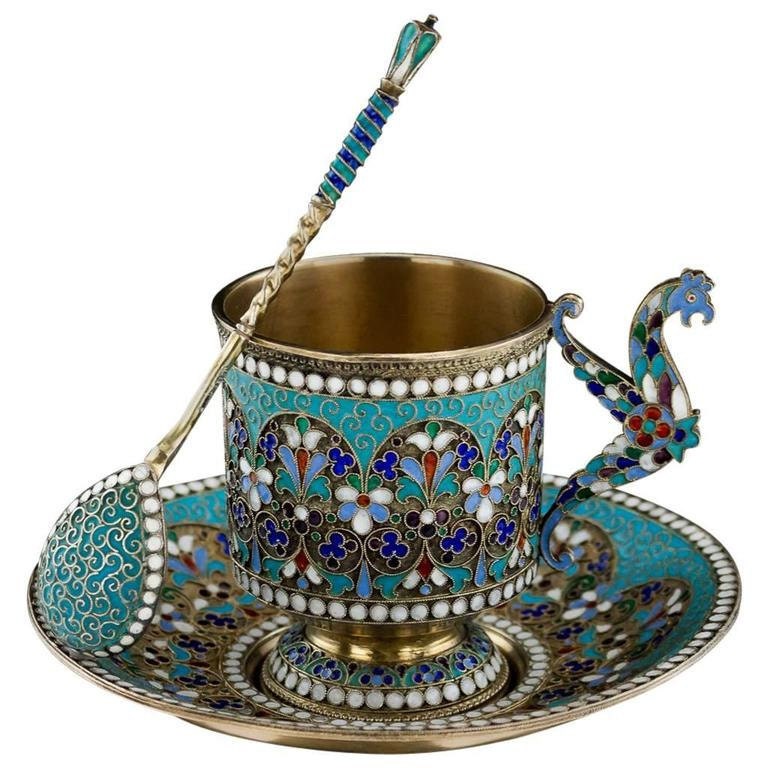To hugga mugga or coax a cuppa? That is the question here.
My dad operated a liquor trade magazine for decades and considered himself as much an expert on potent potables as he was on photography. Had dad been served his Chardonnay in a pint glass, an uproar would have ensued about respecting the winemaker and vintage by serving the beverage in the appropriate vessel.
Such is the case with tea. While most would understand my dad's desire of not wanting his wine served in a glass intended for ale, the arrival of Keurigs and Tassimos to kitchen counters everywhere has made many accustomed to drinking their tea from a mug. After all, despite convention, from a practical point of view, it requires far fewer trips to the brewer and makes maximal use of the pods to brew one 16-ounce mug of tea versus two standard 8-ounce cups.

As the Emily Post Society writes though, "Drinking tea is often a shared experience and comes with certain etiquette implied that sets the learned apart from the non-learned". All manner of customs and questions arise from the drinking of tea ranging from the debate over pinkies out, the proper size of a teaspoon, to the use of bagged tea versus loose with a strainer involved. And that is just the tip of proverbial teaberg, as it were.
On the specific matter of what is the appropriate tea cup, Golden Moon, a purveyor of high-quality tea in the United States, says the wrong cup can ruin the entire tea experience. Golden Moon tells us that, while your teacup may seem like a personal preference, there are three important factors one must always consider that will combine to make a difference as to how your tea tastes. We identify these Three Golden Rules of Enjoying Tea below:
The inside of the cup should be as smooth and non-porous as possible.
If the inside surface of the cup is porous (riddled with tiny pores, just like skin), the cup itself will absorb and retain different flavors and aromas. if the inside bowl of the cup is smooth and dense (non-porous), those same flavors will remain within the tea and the aroma will escape only out of the top of the cup, which is ideal for preserving flavour. Hard porcelain and bone china are ideal companions for tea because of the density of the material.
The lip of the cup should be as thin as possible.
As in drinking fine wine, a thick rim on the vessel draws the attention of the palate away from the contents to the vessel itself. For this reason, choosing a tea cup with a slight rim is always preferable.
A handled porcelain or bone china cup with saucer is always best.
Not only does it look pretty and elegant to use a cup and saucer, it also allows one to raise the proverbial pinkie! And, the handle (which a mug likely has) means you do not have to hold onto a hot surface while enjoying the brew. One thing the mug doesn't have is a saucer and, it is there for a reason. The saucer allows for catching of any spillage that may occur from stirring milk or sugar into the tea.

For me, there is nothing as aesthetically lovely as a table set for high tea displaying lavish cups and saucers, set amidst gleaming silver flatware. After all, you wouldn't serve the luscious cakes and pastries you're offering to your guests on a chipped melamine plate with plastic utensils would you? So, why ruin the age-old tradition of the luxurious cup and saucer by replacing it with the clunky mug? While it may be more pratical, the mug is far less elegant overall and in fact, can completely spoil the enjoyment of the tea itself.
xoxo,
Groovygirl
Groovy is the owner of the online vintage department store BuyfromGroovy at www.buyfromgroovy.com and sells also within the Etsy marketplace as BuyfromGroovy where her shop is typically an Etsy Top 1% performer in its category.

